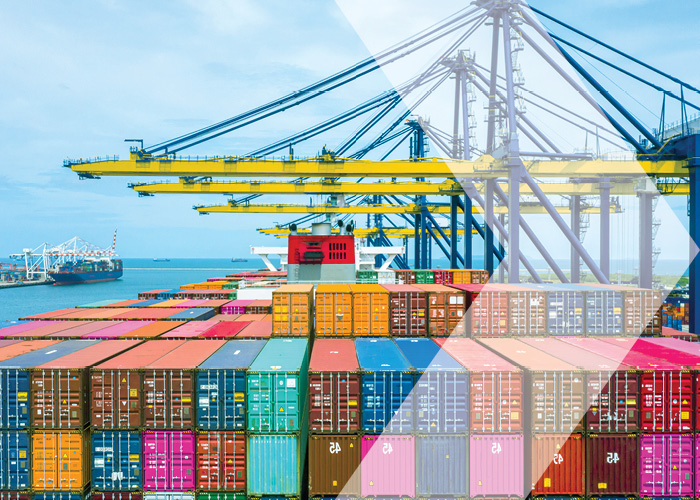The American Association of Port Authorities (AAPA) held its inaugural POWERS Summit and Expo in Tampa, Florida on January 24-26, 2023. Port executives, energy leaders, environmental experts, and other key stakeholders engaged in forward-looking conversations about pressing sustainability challenges and emerging solutions at ports in the US and beyond.
Gus Block of Nuvera Fuel Cells was among the invited speakers at the POWERS Summit. According to an AAPA survey, US ports are expected to build out nearly $50 billion in green infrastructure over the next decade – and hydrogen is set to play a significant role in the industry’s plans. In a session dedicated to exploring alternative fuels for heavy-duty transportation, Gus described the benefits of using hydrogen fuel cells for electrifying many of the port vehicles and equipment that are currently powered by diesel, such as overhead cranes, gantries, container handlers, terminal tractors, drayage trucks, and more.
Ports present myriad use cases for fuel cell power and are also ideal locations for establishing hydrogen infrastructure to support the machinery used on-site, as well as for providing hydrogen to marine vessels and to drayage trucks and other vehicles that constantly enter and leave the port. Ports can also take advantage of their strategic positions to become hydrogen import/export hubs, an opportunity being explored by multiple port authorities. As off-shore wind projects develop over the coming years, ports become the natural channel for hydrogen produced from electrolysis as a means for storing large amounts of renewable electricity.

Terminal operators can benefit significantly by powering their electric port equipment and vehicles with fuel cells, as it offers several major advantages over using batteries alone. For most pieces of large equipment, more energy can be stored on board as hydrogen fuel than in batteries, enabling longer uptime and fewer disruptions during the work shift. Refueling with hydrogen takes approximately the same amount of time as refueling with diesel – as little as 15 minutes to fill an empty tank. Charging depleted batteries takes hours, even when fast-charged. While battery-only vehicles may be suitable for light- and medium-duty applications, fuel cells are well-matched for most medium- and heavy-duty operations.
A major topic of discussion at the POWERS Summit was the US National Blueprint for Transportation Decarbonization, a document released in January 2023 by the Biden-Harris Administration and developed by the Departments of Energy, Transportation, Housing and Urban Development, and the Environmental Protection Agency.
The Blueprint highlights hydrogen fuel cells as one of three key pillars of transportation sector solutions to reach a net-zero US economy in 2050, alongside battery electric vehicles and renewable liquid fuels. The stated goal is to:
Transition to clean options by deploying zero-emission vehicles and fuels for all passenger and freight travel modes. This includes light-duty vehicles, commercial trucks, buses, off-road vehicles (such as agricultural and construction equipment), aircraft, locomotives, maritime vessels, and pipelines. This strategy involves adopting highly efficient zero-emission battery vehicles, hydrogen fuel cell vehicles, and sustainable fuels for vehicles and applications that are more challenging to electrify.
The Blueprint builds on the Bipartisan Infrastructure Law and the Inflation Reduction Act, which together represent historic investments in sustainable clean energy and transportation systems. It also clearly exemplifies the federal commitment to addressing the climate crisis and meeting President Biden’s goals of securing a 100% clean electrical grid by 2035 and reaching net-zero carbon emissions by 2050.
The billions of dollars in incentives becoming available to port authorities, terminal operators, and shipping companies from federal and state sources mean that the time is now to transition to viable zero-carbon alternatives.
We congratulate the American Association of Port Authorities for its leadership in convening the first annual and highly successful POWERS Summit. This is an all-hands-on-deck moment for transportation decarbonization, and ports have a unique and vital role to play both in reducing their own emissions and laying the groundwork to enable other industrial and commercial sectors to do so. We are delighted to be part of the conversation with industry leaders and that fuel cells are part of the solution.

